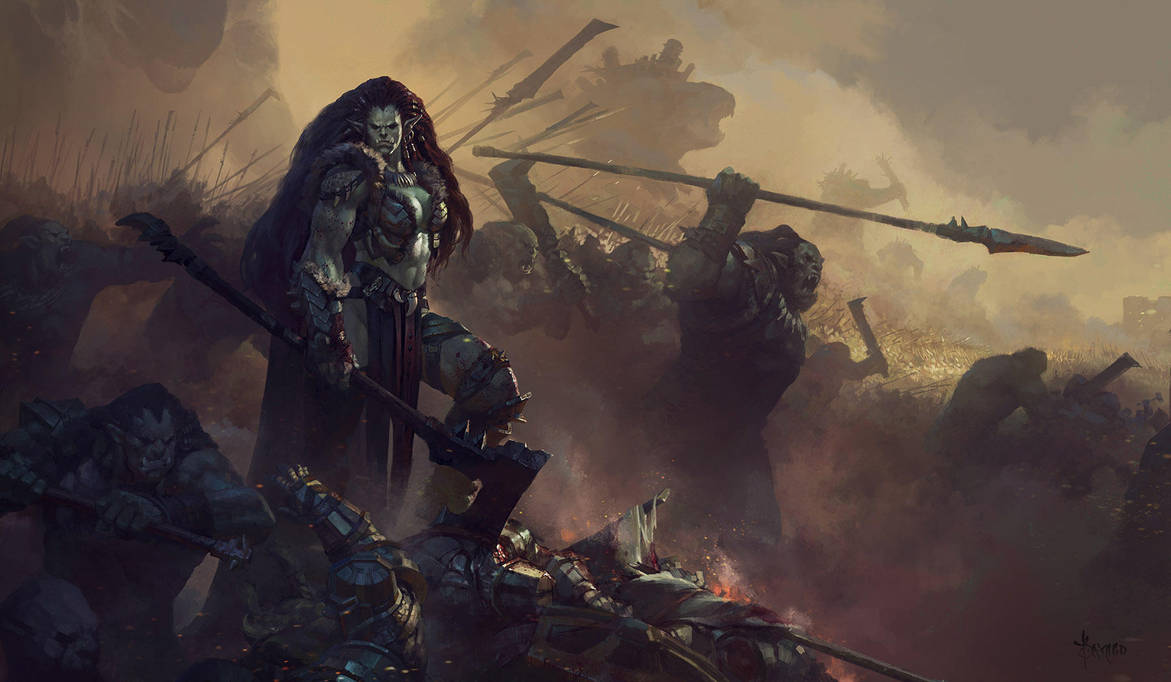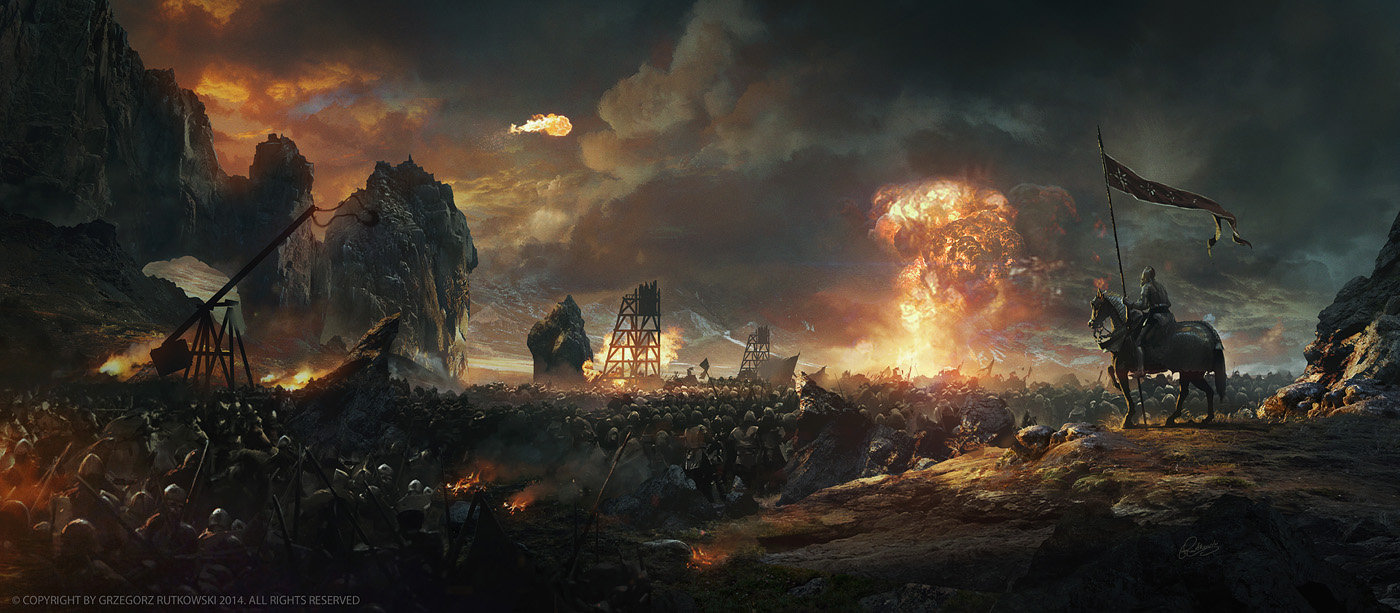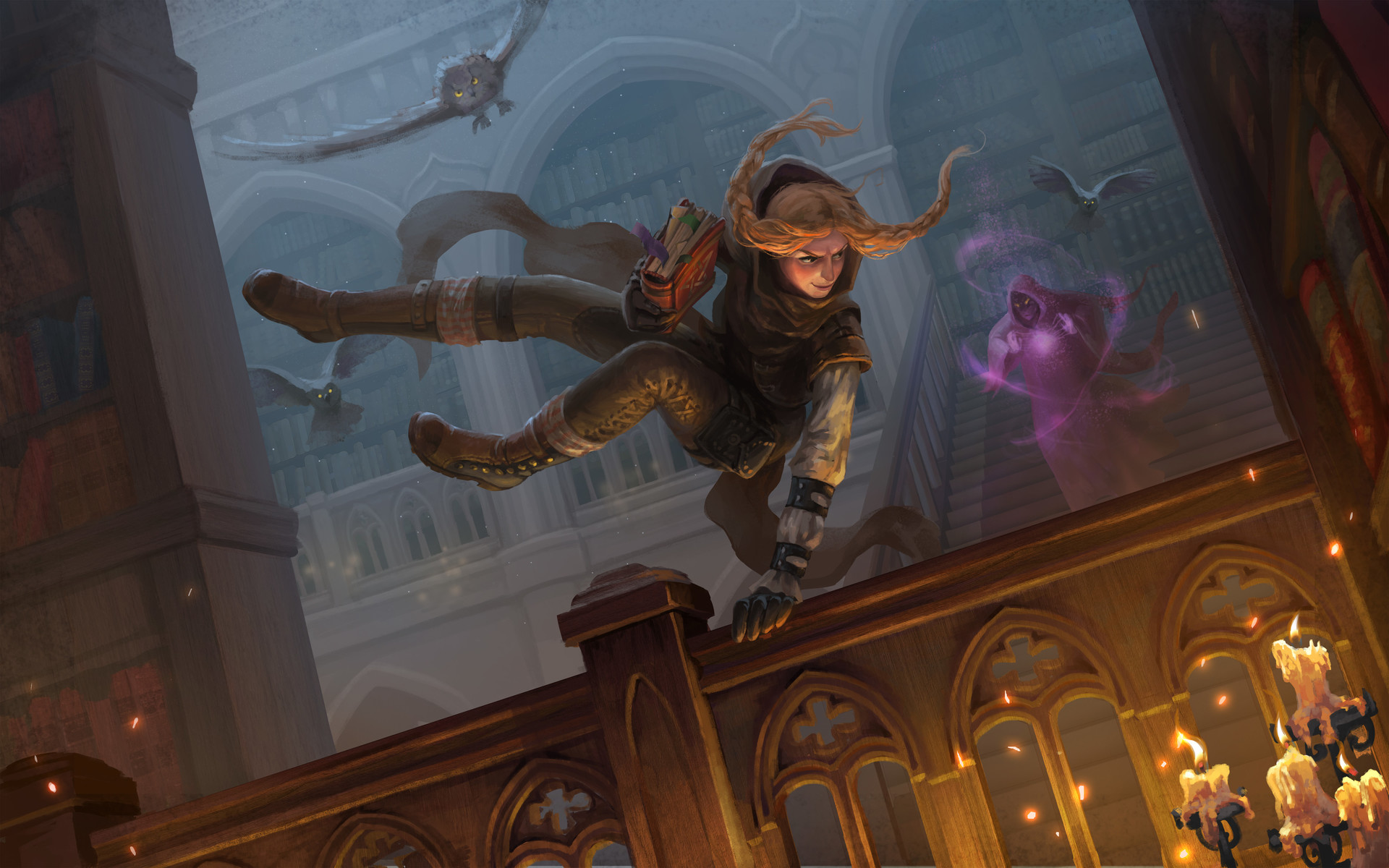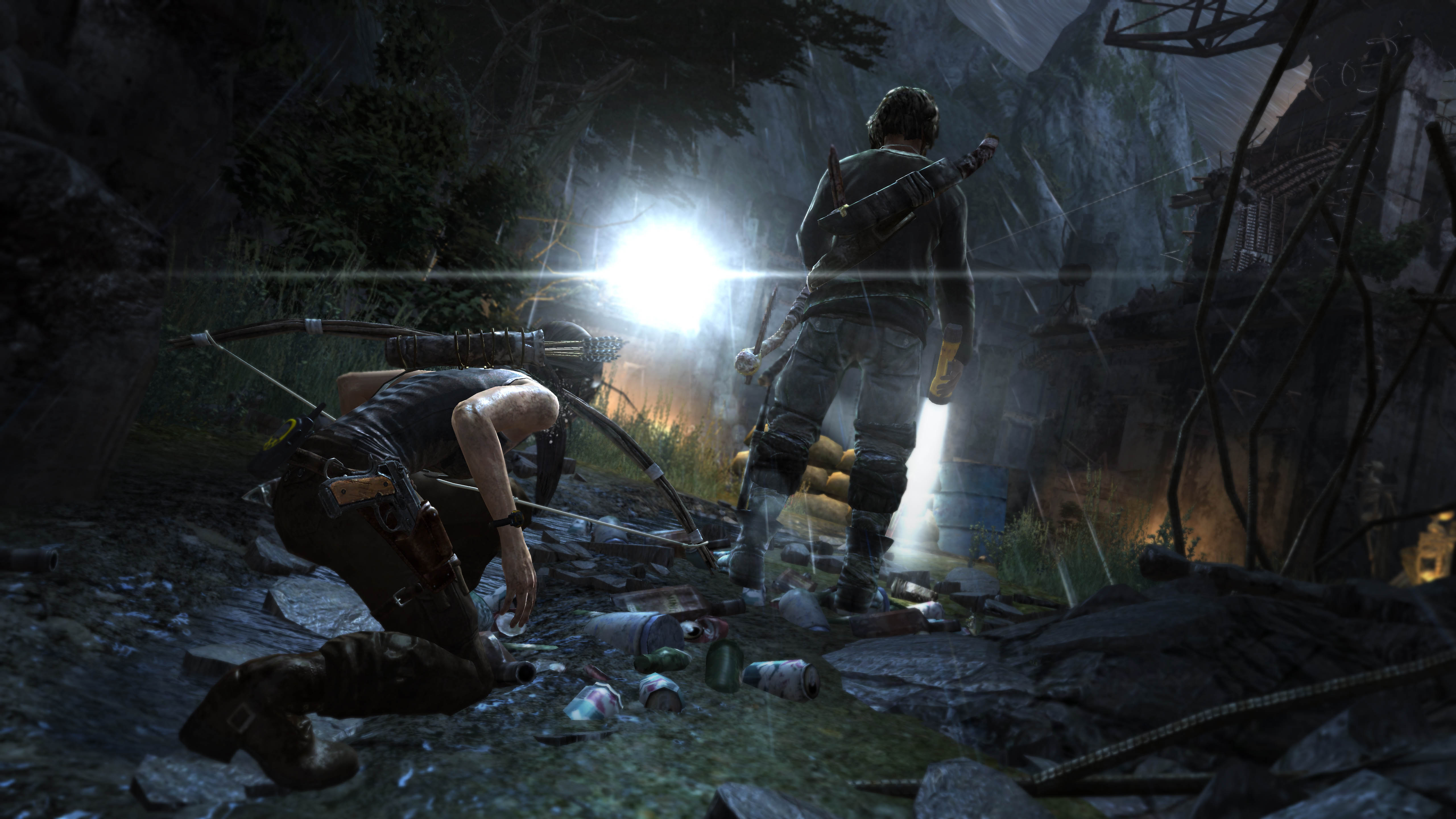I've decided to play with combat as it's traditionally considered for the following reasons:
- I want less of a focus on distinct actions.
- I want more of a focus on the battlefield.
- I don't like Hit Points as an abstraction.
- I wanted a way to make combat with more than 10 participants to be able to shift to larger scale combat if needed.
These things can be achieved a thousand different ways without making significant changes to combat. But rule design is one of my favorite hobbies, so I don't really care if there's way to achieve these through whatever strange alchemy one would want to prefer now.
THE WAR GAME
 |
WHAT IS THE WAR GAME?
The War Game is a dynamic combat method. It prioritizes speed, environmental-based problem solving, and changing combat states from large scale to small scale or vice versa.
War Game Goal: The goal is for all enemies to have fled, surrendered, died, or been rendered incapacitated. As long as there is a single hostile enemy towards the PCs, the War Game continues--or, alternatively, can switch to the Rogue Game. There can be additional goals such as:
- Protecting someone from death.
- Destroying an object or something similar.
- Holding off an enemy force so that a ritual can be completed.
- Taking over a small territory to create a sanctuary of some sort.
Losing the War Game: PCs fail the War Game if they surrendered, are incapacitated, killed, flee, or if an additional goal of theirs is made impossible to achieve.
ANATOMY OF THE WAR GAME
 |
Below are the lingua franca for the War Game:
Hit Dice: Unlike the standard hit dice (HD) of D&D-compatible games, Hit Dice in the War Game dictate how many Maneuvers (see below) a creature can use during their turn. If a creature has no armor protecting it, then when it takes damage from any source, it can expend 1 HD to survive whatever wound it's taking. When an HD must be rolled, it is rolled with a d8.
Maneuvers: Maneuvers are actions that a creature can take on their turn. These can be anything from a single weapon attack, to putting distance between them and the enemy, to attempting to grapple, or even basic movement at length. Performing any maneuver costs 2 HD, or 1 if only a single HD is left. HD spent this way are regained when the next round starts.
Maneuvers: Maneuvers are actions that a creature can take on their turn. These can be anything from a single weapon attack, to putting distance between them and the enemy, to attempting to grapple, or even basic movement at length. Performing any maneuver costs 2 HD, or 1 if only a single HD is left. HD spent this way are regained when the next round starts.
Wound: Damage suffered without armor to sponge it up, or damage that overcomes the armor reduction, results in the loss of 1 HD of the attack's target. Sometimes a wound has a special property, which is stated in the property of the weapon or attack being used. If damage is taken and the target has 1 or fewer HD, they are incapacitated or dead, as per the attacker's decision. This lost HD can only be recovered in the following ways:
- Healing tools.
- Magical healing.
- Special features.
- 8 hours of rest to regain 1 HD.
Weapon: Every weapon is filed into a type (dagger, longsword, hammer, maul, etc) that gives weapons a special property. All weapons deal 1d8 of damage before properties are are factored in. This damage is dealt to armor pools, or to the toughness rating of objects, such as doors or locks.
Armor Class (AC): Armor has a point value associated with it. There are Suits, Helmets, Shields, and Accessories. These further breakdown into things like Full Helmets and Visors, or Breastplates and Gambians, and so on. Total up the armor value, and pay attention to any properties the armor may have associated with it. Add this number to your Dex modifier or the 2nd digit in your Savvy score. This is your armor pool, which can be used to reduce damage when damage is suffered. 1 HD can be spent at the start of your turn to recover the amount of armor rolled, but you can never have more than your maximum pool.
Attack: Attacks are automatic, with no roll needed to inflict damage. Attacked targets can either use armor, inventory slots, or spend 1 HD to dodge away from the attack to avoid it. An attack is considered a maneuver, and the roll of HD (totaled if more than one is spent) spent determines the damage of the attack.
- Mighty Attack: By declaring an attack as mighty, the attacker removes 1 HD from the target, regardless of how much armor is left after damage is dealt. As a result, they cannot spend HD to dodge until the beginning of their next turn.
Environmental Factors: An environmental factor is a detail on the battlefield that can be used as an aid in someway. It is suggested that every battlefield has at least 3 factors included, with no more than 6 or 7 being in motion for sake of keeping things quick. Invoking an Environmental Factor is considered a maneuver. These can be anything from cover from ranged attacks, boulders to tip over, cliffs to push people over, and so on. If desired, you do not need to define these things: players can ask if X is there, and that can be one of the Environmental Factors. Sub-definitions are offered below for types of factors:
- Cover: Reduces all damage from standard ranged attacks to 0.
- Distractions: Such as sand to throw into the eye, chandlers to swing off of, or animals to scatter in front of the target. They can only be invoked once on a specific target and, when invoked, prevent the target from spending HD until the end of the round.
- Hazards: Boulders or cliffs, flaming pits or vats of acid--these hazards are dangers to anyone who comes into contact with them. When used, the target's armor is reduced to 0 for that round and they lose 1 HD.
Morale: Whenever one of the following conditions is met, a morale check must be rolled for that side immediately:
- Half of that side's fighters are somehow rendered incapacitated.
- A goal for that side is failed.
- A designated leader of that side is somehow rendered incapacitated.
- Two rounds pass without one side having inflicted any damage or wounds to another.
Should one of these triggers occur, the GM (or players if this is for them) rolls 1 HD. Any creatures with the # rolled or less begin to immediately flee, and cannot spend HD for any other reason unless they are damaged in the fleeing.
Small Scale: Any War Game that features 10 or fewer individuals is considered small scale. These small scale War Games use the above rules.
 |
Large Scale: Any War Game that features more than 10 individuals is considered large scale. During a large scale War Game, each faction involved takes the average of their HD and the average of their armor into one large pool. Name a leader for these factions. Environmental factors can be used by factions. Below rules are elaborated for the large scale War Game.
Leader: On a faction's turn, members decide what to do and the leader confirms what maneuver the faction is taking. If a leader is incapacitated or killed during the war game, than that faction loses all but 1 HD.
Casualty: When an HD is lost by a faction during a large scale War Game, this represents one wounded member of that faction. If all HD are lost, than the leader of the faction is incapacitated, and remaining members are scattered and surrounded. This either leads to a small scale War Game or an end to the War Game.
Roles (Optional): Factions can have roles, if the PCs or GM so chooses. For example, an enemy faction may have archers and spearmen in it. When an HD is lost, other than the leader, the attacking faction decides which member is taken out. So, if all the archers are taken out of a faction, the faction can no longer make ranged attacks with bows.
Leader Killing: The leader of a faction can be directly attacked. The attacking faction declares their maneuver as Leader Killing and rolls 1 HD. If the number rolled is 7 or higher, the leader is incapacitated or killed. If it is lower than 7, than for every number lower, the attacking faction loses 1 HD.
PLAYING THE WAR GAME
Below is offered a listed procedure.
- The PCs are either attacked or engage another group of individuals. Total participants are decided and the GM decides if this is a small or large scale War Game.
- In case of a small scale War Game, everyone rolls 1 HD; the highest decides which side goes first, and popcorn initiative is used from there.
- In case of of a large scale War Game, both sides leaders roll 1 HD; the highest decides which side goes first and so on.
- At anytime, someone can choose to spend 1 HD to go right at that moment instead of their normal order.
- Goals are established for both side, though this need not be written down, etc.
- All participants declare their maneuvers on their rounds and resolve them accordingly.
- At the start of every round, the GM is free to introduce or change any Environmental Factors of their choosing.
- Once one side has been sufficiently defeated, the War Game ends.
Contested Maneuvers: Whenever a creature does something that a creature would normally resist (such as being grappled, shoved, etc.) the targeted creature must spend 1 HD. The # rolled is added to the defender's Strength or Athletics attribute; the attack's rolled # is likewise added to their Strength or Athletics attribute as well. The creature with the highest total decides the outcome.
Getting Back Into It: If a creature is killed or incapacitated and then brought back into the fight, they go last for the next 2 rounds and cannot spend 1 HD to go sooner.
 |
d6 Armors
- Arming doublets/aketons adds +2 to your AC pool and you can add pieces of other armors to it, increasing it further by +1.
- Chain/Scale adds +6 to your AC pool, is loud as hell, and permanently decreases in armor value by 1 point every time it total AC is reduced to 0.
- Gambeson adds +4 to your AC pool, can be ignited, and is stiff enough to lower your Dexterity or Savvy score while worn by -1.
- Lamellar armor adds +4 to your AC pool, though you can't spend AC to protect your arms or legs from called shots.
- Piecemeal armor adds +2 to your AC pool for each piece that covers: torso, arms, legs, and head.
- Plate armor adds +8 to your AC pool, is loud as all hell, and prevents dismemberment.
d8 Environmental Factors - Cover
- Broken ruin walls, crumbling, can be pushed over onto those near by.
- Trees, thick and old, animals flee the canopy when noise is made close by.
- Fog, which provides no real protection, but makes it hard to determine your location.
- Furniture, easily broken, not big enough for you and someone else.
- Building wall, sturdy, easily followed behind.
- Other creatures, likely to move and maybe attack if used for cover.
- Bushes and foliage, provides no real protection but hides your location.
- Pits or otherwise holes in the floor, also provides no real protection but can get you the hell out of the way.
d8 Environmental Factors - Distractions
- Sand, ash, dust, or soot, all ready to be thrown into someone's eye.
- A crowd of people, perhaps as small as a gathering or as large as a festival, ready to scream and cause chaos.
- Flickering lights, likely in a lantern or wall-torch, ready to be struck or put out.
- Inclement weather picking up, such as rain turning into a downpour, to allow fleeing.
- Nearby animal groups, always ready to be incited into a full blown riot.
- Swingable vines or chandeliers or tapestries, to either throw onto someone to confuse them, or to otherwise use to swing off of.
- Large, echoing caverns or plates of metal that, when struck, make loud, confusing sounds.
- Mirrors that reflect a warped reflection of everything around them when stared into.
d8 Environmental Factors - Hazards
- Large, precariously placed objects prepared to be pushed onto someone. Targets stuck in hazard are considered subdued.
- Easily-ignited materials close by, and something ready to spark them, such as a match or torch accompanying fireworks or oil. Fire, until put out, keeps AC at 0 for those ignited.
- Hardly-covered pitfalls lined with dung-covered spikes. Makes a limb unusable when fallen into.
- Cliffs looming over expanses too deep to be survived. Kills whoever is thrown off, as long as falling can kill them.
- Lightning storms, hail, or fast moving winds carrying sharp debris. Reduces HD by an additional -1.
- Tangling cloth, branches or vines that wrap around whoever is thrown into them. Targets stuck in hazard are considered subdued.
- Hidden piles of quicksand or mud. Reduces movement by 10 feet for every round stuck in hazard.
- A vat of acid, pit of lava, or other place where being pushed into will cause a very bad day. Destroys 5 inventory slots per round stuck in hazard.
d12 Weapon Categories
- Axes strip 1 HD from the target when max damage is rolled.
- Bastard swords double damage if wielded in both hands.
- Daggers immediately remove 1 HD when a subdued, grappled, or incapacitated is attacked.
- Garrote wires ignore AC entirely and instead immediately removes 1 HD.
- Guns ignore armor and remove 1d4 HD on a hit.
- Lances skewer targets when max damage is rolled and the attacker is riding something.
- Mauls permanently reduce a target's AC by 2 when reducing their AC to 0.
- Shields (because these are really weapons, tbh) add 2-4 points to the PC's AC pool depending on shield size.
- Spears shove enemies back when hit by 10 feet.
- Torches light things on fire if max damage is rolled.
- Warbows can shoot up to 400 yards and damage HD directly if not blocked with a shield or metal armor.
- Whips can subdue a target if max damage is rolled. Targets subdued this way can be shoved to the ground or disarmed at the same time.
d4 Wound Types
- Bleeding wounds, left by bladed or skewering weapons, reduce AC maximum by 5 (minimum 1).
- Broken bones or ruined limbs, left by crushing or piercing weapons, make either attacking or moving as a maneuver almost impossible.
- Burning keeps a target's AC at 0 and removes 1 HD at the start of every round.
- Lingering wounds leave a special condition on the player, as determined by the GM, such as being blinded, missing an arm, etc.



